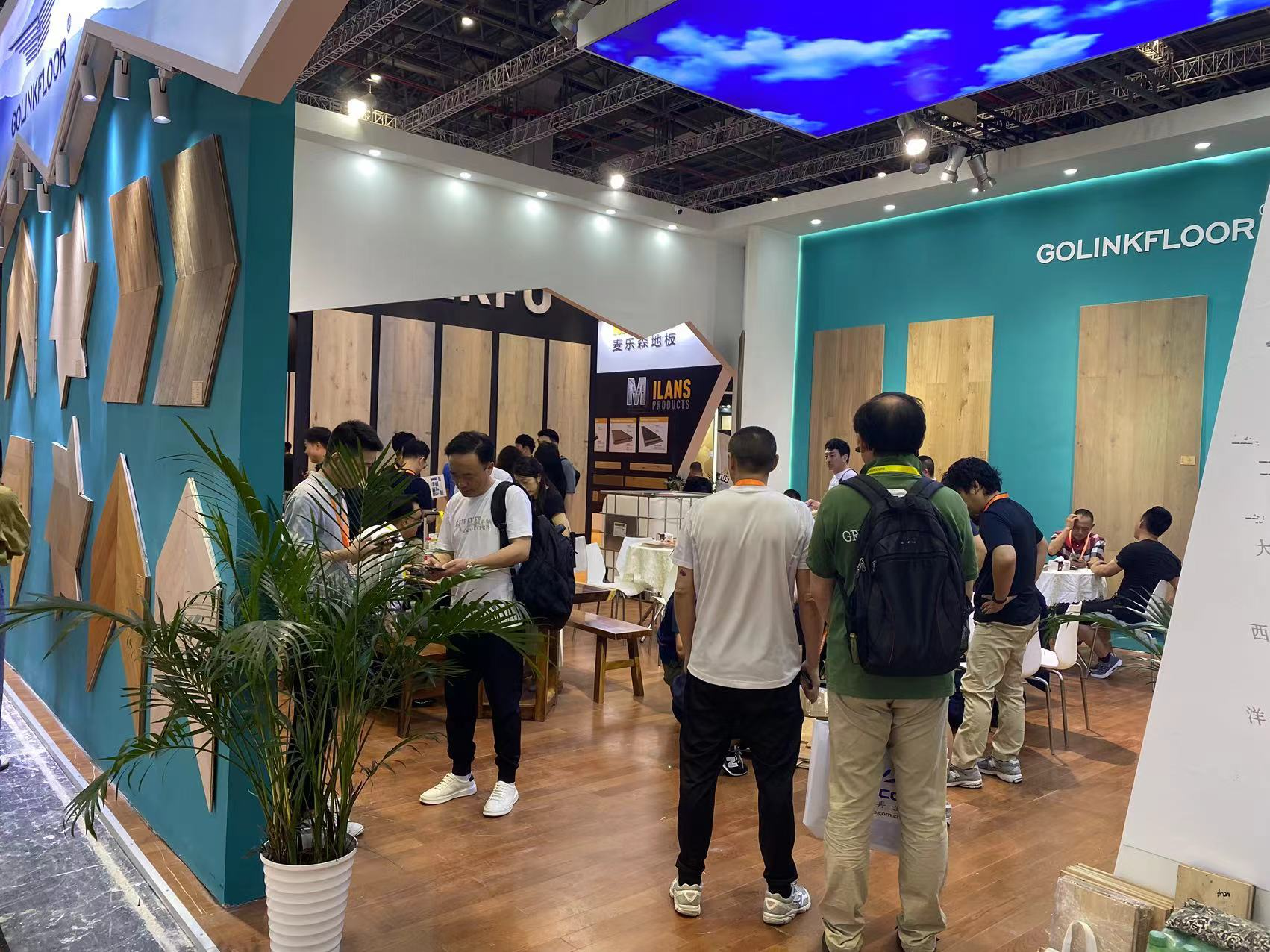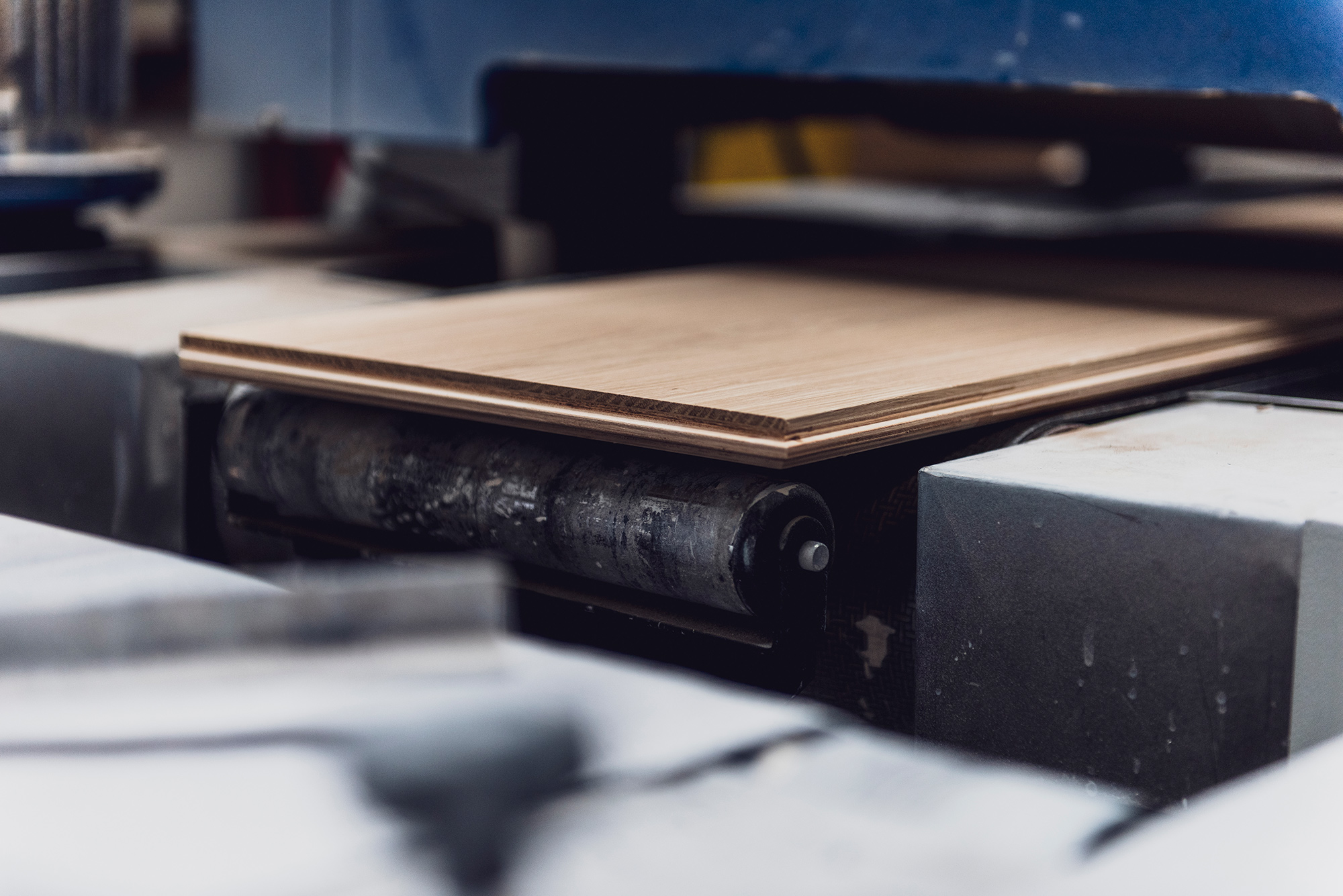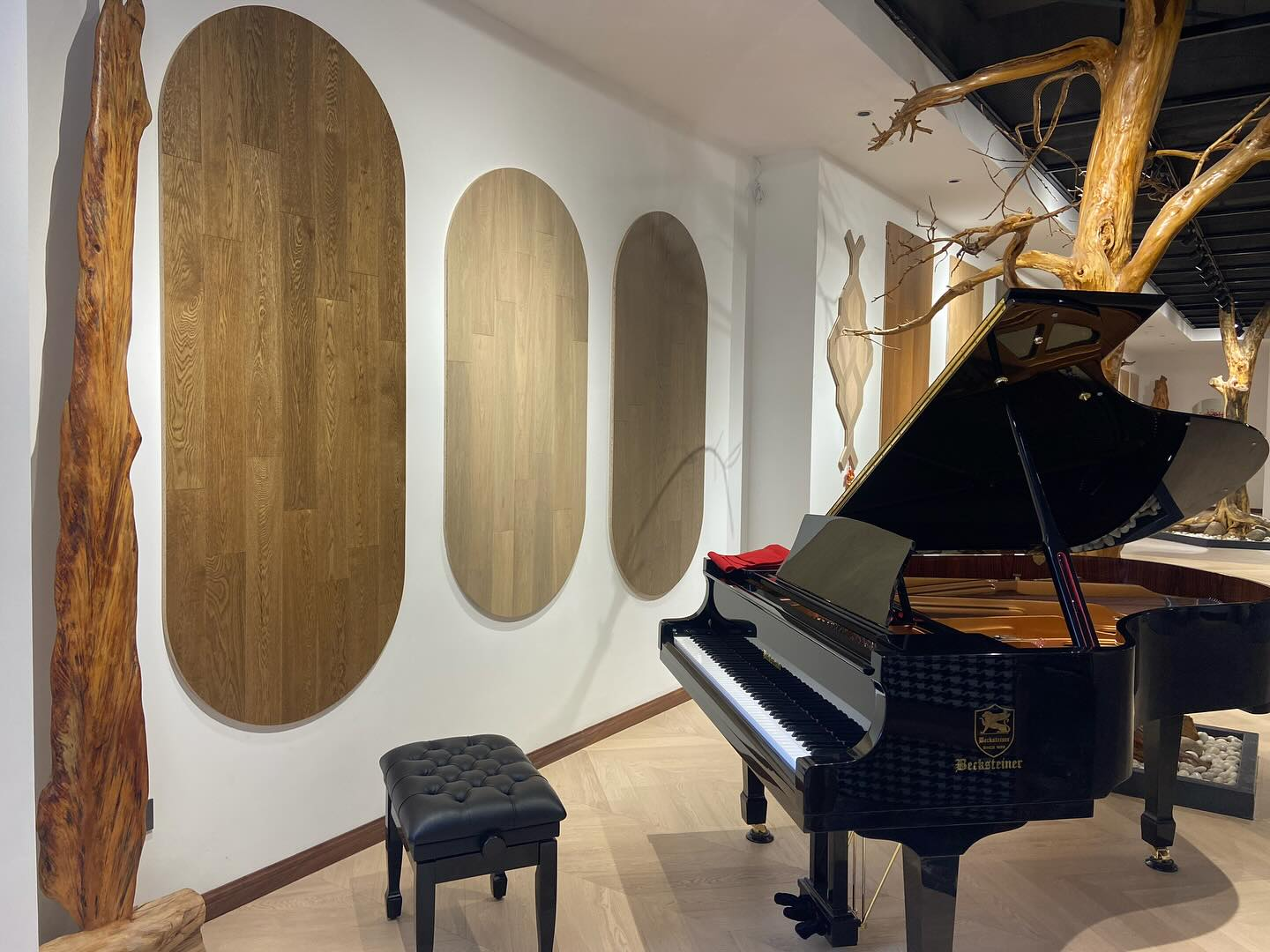The Future of Wood.
The Future of Wood.
Timber is the ultimate renewable. Trees capture and store carbon and are renewable, recyclable and biodegradable. All our timber collections have an engineered construction, which uses approximately one-tenth of slow-growing hardwood veneer resources compared to solid timber. By supplying FSC® and PEFC® certified, sustainably sourced engineered timber products, we’re helping to minimize the amount of slow-growing hardwood needed to be harvested to make these products.
- All of our products are 100% CARB 2, F4* low formaldehyde compliant.
- All of our timber floorboards are sourced from sustainable forests and mills.
- Our proprietary adhesive has zero added VOC’s.
- All of our waste is repurposed.
- Small Cutoffs are used to make Chevron and Herringbone and Parquet Panels.
- All of our employees earn a living wage or higher.
- We pay 100% of health insurance Premiums to our employees.
Our mission is to bring our clients closer to nature with our natural, renewable building materials and we invest more time to get an authentic wood product that people will appreciate and even cherish for decades to come.
Sustainability & Nature
Our Commitment
Our Commitment
We’re committed to reducing our impact on the environment with our products and processes. We responsibly source our timber from European plantations, and use environmentally conscious manufacturing processes to ensure that our floors are produced sustainably.
Sustainability and Nature
Our Commitment
Our Commitment
We’re committed to reducing our impact on the environment with our products and processes. We responsibly source our timber from European plantations, and use environmentally conscious manufacturing processes to ensure that our floors are produced sustainably.
100%
E0, E1, F4* and CARB 2 Products
Nature forms the basis for our lives. Forests reduce the proportion of carbon dioxide in the air and thus act as an important filter and supplier of oxygen. This basis of life can only be maintained in the long run through sustainable action and environmentally conscious management of the forests.
Approximately 16 percent of our engineered flooring is made of the FSC raw material wood. We therefore have a responsibility in the sector of industrial wood processing and we are quite aware of this. We are convinced: this is the only way to reduce overexploitation and illegal logging in the long term.
All the other raw materials that we receive from suppliers also undergo strict quality controls during purchasing and the production process. This is how we ensure that we meet the demands of our customers and also fulfil our own quality standards.
While many people would consider ‘re growth forestry’ as being ‘plantation’, reality is that they are not plantations because plantations are grown in a mono-culture where habitat once was. Re growth forestry’s purpose is to balance habitat and timber production in perpetuity – a task that plantations or mono-cultures cannot do. A task that agro-forestry aims to meet.
Sustainable timber helps beat climate change. According to the IPCC, “a sustainable forest management strategy aimed at maintaining or increasing forest carbon stocks, while producing an annual sustained yield of timber, fibre or energy from the forest, will generate the largest sustained mitigation benefit”. Source.



